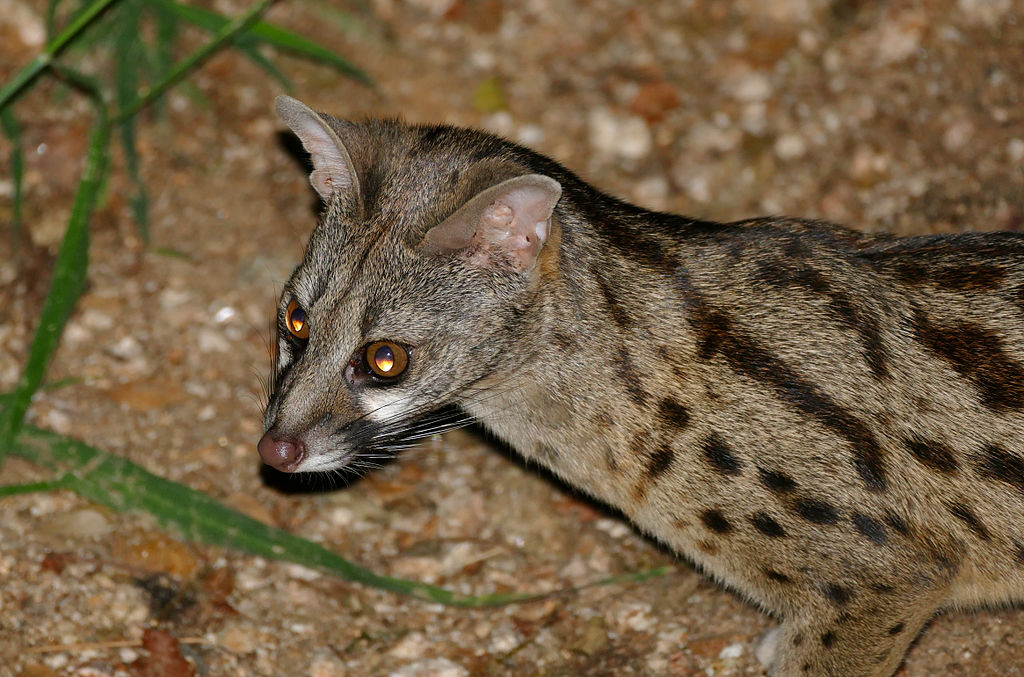
Known for its fierce fighting skills, the meat-eating mongoose is one of the last animals you’d expect to find chugging sugary nectar out of flower blossoms. But a surprising new study monitoring how mammals interact with the flowers of the sugarbush plant in South Africa’s shrubland caught these carnivorous creatures red-handed, sticking their noses into the blooms. The genet, a cat-like cousin of the mongoose, was also found to have an unexpected sweet tooth.
Researchers from the University of Cape Town set up motion and infrared sensor cameras to capture evidence of animals visiting sugarbush (Protea) flowers, which are pollinated by small ground-dwelling mammals. Rodents and elephant shrews do most of the work, frequently enjoying the flower nectar and helping the plants reproduce in return. Prior to viewing the footage, however, the scientists had no idea that carnivores view the flowers as a tasty snack, too.
The large-spotted genets and Cape grey mongooses dove right into the blooms, which produce nectar containing over 30 per cent sugar by weight. Pollen seen on their snouts after they drank supports the theory that they play a larger role in pollinating the plants than previously thought.
While genets are generally considered omnivorous, they strongly prefer animal matter to plants, typically feeding on rodents, bats, birds, bird eggs and insects. Mongooses, on the other hand, have rarely been known to eat anything other than meat, insects and eggs. They feed primarily on crabs, lizards, earthworms, birds and rodents, and are renowned for their ability to fight and kill venomous snakes like cobras.
‘These unrelated animals have different diets, so it’s a puzzle as to what kind of common attractive signal is being emitted by these plants,’ says researcher Sandy-Lynn Steenhuisen.
One possibility may be the fact that the flowers emit a fermented odour similar to that of sour milk or cheese, which would likely be more enticing to carnivores than a sweet, sugary smell. A 2012 study at the University of Zurich found that most meat-eating animals can’t taste sugars, bearing mutated forms of the genes responsible for a sweet tooth. It’s likely that these animals had ancestors that enjoyed a wider range of foods, but over time, the desire to consume anything other than meat began to disappear. Taste tests confirmed that the animals with broken sweet tooth genes, like spotted hyenas, sea lions, fur seals and a Madagascan mongoose relative called the fossa don’t discriminate between bowls of plain water and sugar water.
While genets and mongooses may not be quite as crucial to sugarbush pollination as smaller mammals, their wider travel ranges may mean that they help disperse the pollen across greater distances.
‘Their home ranges are much larger than those of rodents, the more common visitors to these plants. So, although their visits may be infrequent, they may play a small important part in outcrossing plants far away from each other,’ says Steenhuisen.
